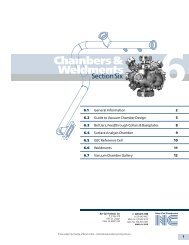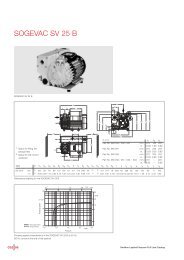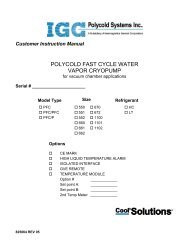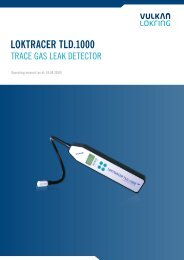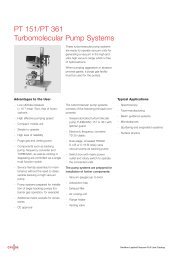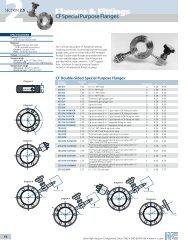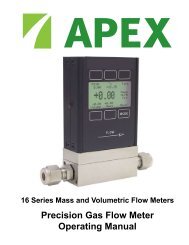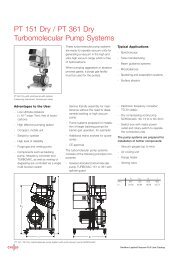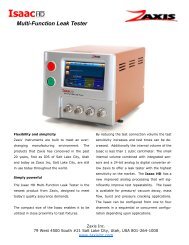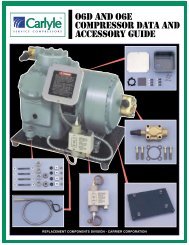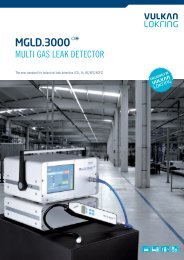B2 - Schoonover, Inc.
B2 - Schoonover, Inc.
B2 - Schoonover, Inc.
Create successful ePaper yourself
Turn your PDF publications into a flip-book with our unique Google optimized e-Paper software.
PPM 422 Plasma Process Monitor<br />
Residual Gas and Process Gas Analyzers<br />
PPM 422 Plasma Process Monitor<br />
User Advantages<br />
♦ Detection of neutral particles and of positive and negative ions from<br />
the plasma<br />
♦ Energy analysis of neutral particles and of positive and negative ions<br />
<strong>B2</strong><br />
♦ Measurement of radicals<br />
♦ End point detection of plasma processes<br />
♦ Large dynamic range<br />
♦ High measuring speed<br />
The PPM 422 is a differentially pumped mass spectrometer unit with<br />
integrated energy analyzer for measuring neutral particles, positive and<br />
negative ions, as well as for energy analysis of ions and neutral particles<br />
in plasma processes.<br />
The extraction orifice is located near the plasma. It can be floating or<br />
biased. Directly behind the extraction orifice, there is a lens and the ion<br />
source with 2 filaments, followed by a lens and the energy analyzer. An<br />
additional lens focuses the ions into the mass filter. The mass filter, the ion<br />
source, the lens system, the energy analyzer, and the deflection unit are<br />
isolated to ground and may be biased up to 500 V.<br />
The PPM is operated with the Balzers Quadstar TM software package<br />
specially optimized for this application.<br />
1 Turbo pump<br />
2 Secondary electron<br />
multiplier SEM<br />
3 Deflection unit<br />
4 Quadrupole<br />
mass filter<br />
5 Extraction orifice<br />
6 Safety shield<br />
against arcing<br />
7 Entrance lens<br />
8 Ion source<br />
9 Transfer lens<br />
10 Energy analyzer<br />
Mass spectrum of positive ions<br />
Mass spectra of positive ions from a plasma reveal detailed information of the various species<br />
contained in a plasma, and therefore allow an insight into plasma chemistry. The basis for<br />
reactive ion etching is the conversion of the material to be removed into volatile reaction products<br />
which can be pumped away. An example is the etching of tungsten in SF6 plasma where metallic<br />
tungsten is converted into WF6. This reaction product can be recognized in the mass spectrum<br />
by means of the various dissociation products (WF5+, WF4+, WF3+, WF2+).<br />
Mass spectrum of negative ions<br />
Negative ions are a major component in a plasma with electro-negative species like fluorine,<br />
chlorine, oxygen or hydrogen. In certain plasma processes like plasma polymerization, the<br />
negative ions play a key role, which is partly due to the very long residence time of negative ions<br />
in the glow region. Therefore, detection of negative ions is highly desirable. The figure shows<br />
a mass spectrum of negative ions from a SF6 plasma in the mass range 100-200 amu.<br />
Besides the peaks due to the etch gas SF6, one can recognize various peak groups related<br />
to the etched molybdenum.<br />
Note: Contact the sales office nearest you for ordering information.<br />
<strong>B2</strong>.27




